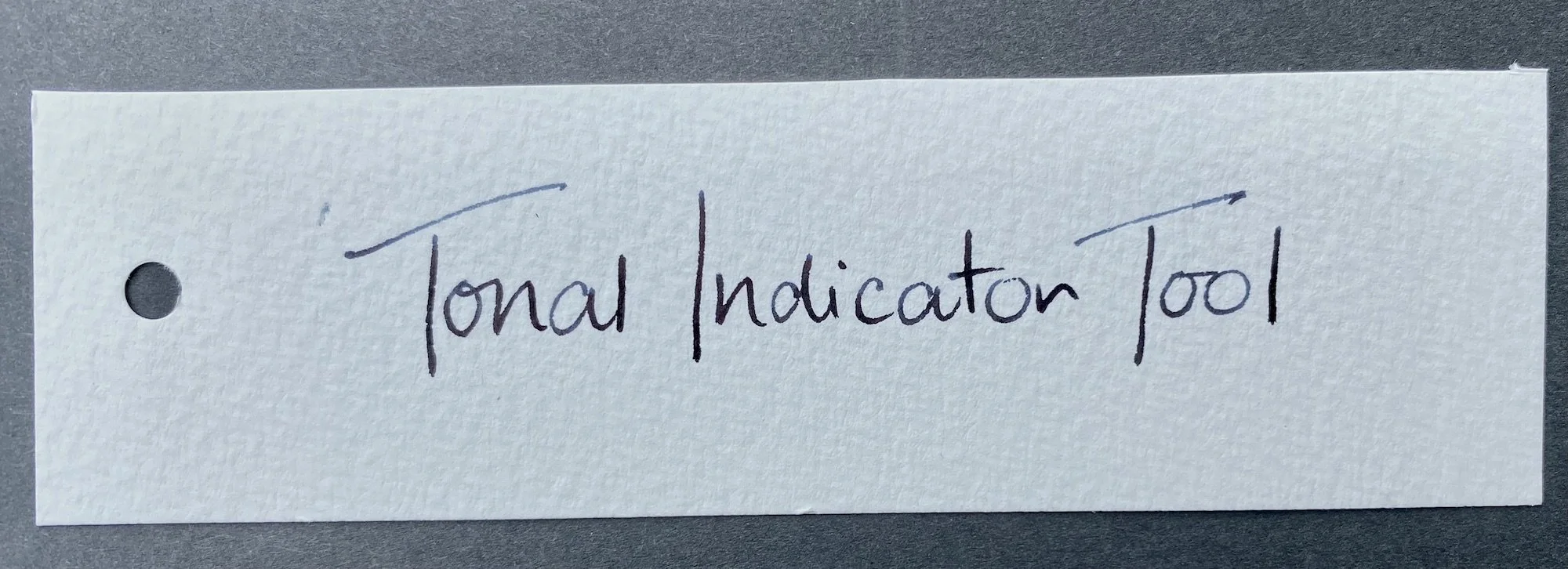Tonal Indicator Tools
The importance of using the correct tonal qualities of a painting should not be underestimated. Get it wrong and your painting will appear to be flat and lifeless; get it right and your work will sing!
There are a few well known ways of assessing tones within your subject, but perhaps one of the easiest is the lesser know Tonal Indicator Tool (T.I.T.).
A what?
OK, so it’s just a nerdy name for a hole in a piece of paper, but used correctly this little hole can be almost magical in aiding you to assess tone! Give it a try; instructions below.
A ‘Tonal Indicator Tool’
Instructions
Close one eye.
Hold the T.I.T. at arms length. It is important to hold it at arms length to reduce your field of vision to a tiny spot; otherwise you gain nothing!
Look through the hole at the subject.
Assess the tonal quality of the spot you are looking at. Is it a dark, mid- or light tone? Also ask yourself whether what you are looking at is lighter or darker than you expected it to be; this can produce some surprises!
Use the tool to view a different ‘spot’ of your subject. After assessing the tone of this new area, compare it to the first spot that your considered. Is it lighter or darker, and, importantly, by how much?
An excellent place to start is by looking at the walls of a room which you know to be painted in the same colour. Look at an area in bright light, then compare it with an area in shadow. This exercise usually results in a gasp and a “Wow”.
The tones/colours you are seeing through the hole are the ones you need to use in your painting. If you switch between looking at your subject through the T.I.T and directly you will probably notice how the tonal contrasts diminish as your brain re-adjusts to processing the whole subject, rather than just the isolated spot.
Be brave! Those are the tones you need, even if they seem too dark! Don’t forget that when your viewer sees the picture as a whole they will read the image as a whole, their brains making natural adjustments again.
For a more in depth explanation of why this works (it’s not really magic) , some interesting tips on tone and making your own T.I.T. take a look at Sian’s article How to See Tone.
